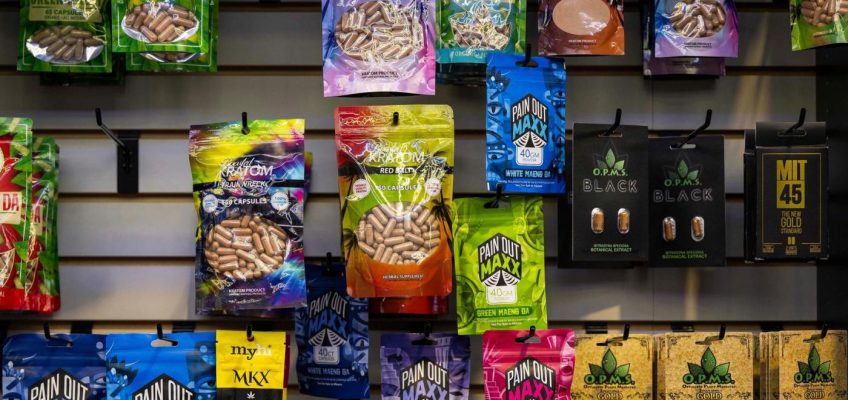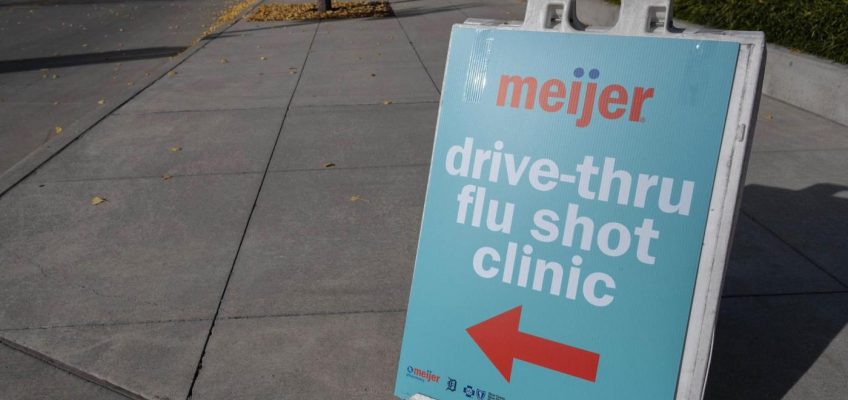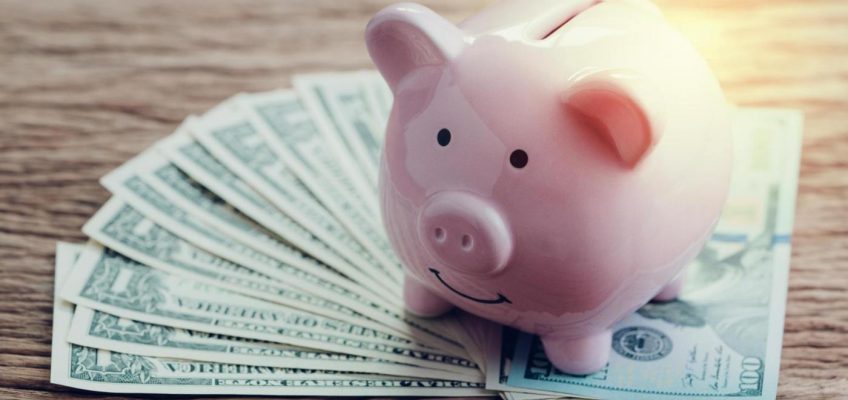By Amanda Hernández, Stateline.org
For years, state lawmakers have taken the lead on regulating kratom — the controversial herbal supplement used for pain relief, anxiety and opioid withdrawal symptoms. Some states have banned it entirely. Others have passed laws requiring age limits, labeling and lab testing.
At least half of the states and the District of Columbia have enacted some form of regulation on kratom or its components — building a patchwork of policies around a product largely unaddressed by the federal government.
But that may soon change. The U.S. Food and Drug Administration is pushing to ban 7-hydroxymitragynine, or 7-OH — a powerful compound found in small amounts in kratom and sometimes concentrated or synthesized in products sold online, at smoke shops or behind gas station counters.
Federal health officials announced last month that the compound poses serious public health risks and should be classified as a Schedule I controlled substance, alongside heroin and LSD.
The move marks a significant shift in how federal regulators are approaching kratom, which they attempted to ban in 2016. It also has sparked debate about how the change could impact the growing 7-OH industry and its consumers.
This year, at least seven states have considered bills to tighten kratom regulations, including proposals for bans, age restrictions and labeling requirements.
Kratom, which originates from the leaves of a tree native to Southeast Asia, can have a wide range of mental and bodily effects, according to federal officials, addiction medicine specialists and kratom researchers. Reports of fatal kratom overdoses have surfaced in recent years, though kratom is often taken in combination with other substances.
Kratom and 7-OH are distinct products with separate markets, but they are closely connected. 7-OH is a semi-synthetic compound derived from kratom and only emerged on the market in late 2023, while kratom itself has been available for decades.
Leading kratom researchers also say more research is needed to fully understand the long-term effects of using both substances.
It’s almost flu season. Should you still get a shot, and will insurance cover it?
Twin Cities mom wants to help you have ‘The Talk’ with your kids
Considering a life change? Brace for higher ACA costs
‘A fear pandemic’: Immigration raids push patients into telehealth
Despite federal shift, state health officials encourage COVID vaccines for pregnant women
“There’s much we don’t know, unfortunately, on all sides,” said Christopher R. McCurdy, a professor of medicinal chemistry at the University of Florida. McCurdy is a trained pharmacist and has studied kratom for more than 20 years.
Research suggests kratom may help with opioid withdrawal and doesn’t seem to cause severe withdrawal on its own. Smaller amounts seem to act as a stimulant, while larger doses may have sedative, opioidlike effects. Very little is known about the risks of long-term use in humans, according to McCurdy.
As for 7-OH, it shows potential for treating pain, but it hasn’t been studied in humans, and it may carry a high risk of addiction. Researchers don’t yet understand how much is safe to take or how often it should be used, McCurdy told Stateline.
While some leading kratom experts agree that kratom and 7-OH should be regulated, they caution that placing 7-OH under a strict Schedule I classification would make it much harder to study — and argue it should instead be classified as Schedule II like some other opioids.
A federal survey from 2023 estimated that about 1.6 million Americans age 12 and older used kratom in the year before the study. The American Kratom Association, a national industry lobbying group, estimated in 2021 that between 11 million and 16 million Americans safely consume kratom products each year.
Since gaining popularity in recent years, 7-OH has appeared in a growing number of products. Some researchers and addiction medicine specialists say many consumers, especially those new to kratom, sometimes don’t understand the difference between products.
“It’s a pure opioid that’s available without a prescription, so it’s akin to having morphine or oxycodone for sale at a smoke shop or a gas station,” McCurdy said. “This is a public health crisis waiting to happen.”
Federal crackdown targets 7-OH, not kratom
In late July, the U.S. Department of Health and Human Services recommended that the federal Drug Enforcement Administration place 7-OH in Schedule I, citing a high potential for abuse. The classification would not apply to kratom leaves or powders with naturally occurring 7-OH.
“We’re not targeting the kratom leaf or ground-up kratom,” FDA Commissioner Marty Makary said at a news conference. “We are targeting a concentrated synthetic byproduct that is an opioid.”
Makary acknowledged that there isn’t enough research or data to fully understand how widespread 7-OH’s use or impact may be. Still, he said the Trump administration wants to be “aggressive and proactive” in addressing the issue before it grows into a larger public health problem.
While only small amounts of 7-OH occur naturally in the kratom plant, federal officials have raised concerns about U.S. products containing synthetic or concentrated forms of the compound because it’s more potent than morphine and primarily responsible for kratom’s opioidlike effects.
The FDA’s recommendation to schedule 7-OH will now go to the DEA, which oversees the final steps of the process — including issuing a formal proposal and opening a public comment period.
If finalized, the rule could affect both companies selling enhanced kratom products and consumers in states where those products are currently legal.
The DEA backed off scheduling kratom compounds in 2016 after widespread public opposition.
Kirsten Smith, an assistant professor of psychiatry and behavioral sciences at Johns Hopkins University who is studying kratom’s effects in humans, said she was surprised by the FDA’s push to schedule 7-OH.
“We don’t really have a public health signal of a lot of adverse events for either kratom or for 7-OH at this time,” she told Stateline. “I was, frankly, always surprised that kratom was pushed toward scheduling at an earlier time point. … I don’t know that we have data to support scheduling even now.”
Still, some advocacy groups, including the Holistic Alternative Recovery Trust, argue the push to schedule 7-OH is driven more by corporate interests than public health, suggesting the kratom industry is trying to sideline competition from 7-OH products.
“We think that this is just happening because of the legacy kratom manufacturers losing market share and wanting to gin up a crisis with this,” said Jeff Smith, the national policy director for the group, who said he has used 7-OH for sleep and pain management.
While his organization supports regulation and safe consumption, members worry the federal government’s move could drive people to riskier substances or push the market underground.
“It’s made a profound difference in my life,” Smith said. “We think it would be tragic to cut it off based on such a paucity of data when there’s so much potential for this product to help people.”
Public health concerns
Federal health officials say a key concern is the growing use of kratom and 7-OH products among teens and young adults.
Some officials and addiction medicine specialists have pointed out that these products often come in flavors and packaging designed to appeal to younger buyers, with few controls over where or how they’re sold. In some states without clear regulations, kratom and 7-OH products are available at gas stations or online, sometimes without any age verification.
“Whenever you go into a gas station and even though it’s behind the glass, it’s kind of eye level, and it has all of these bright colors — it has all of these things that really attract the visual of a kiddo,” said Socorro Green, a prevention specialist with Youth180, a nonprofit focused on youth substance use prevention in Dallas.
Green added that kratom and 7-OH products may be even more accessible to young people in rural communities, where gas stations and convenience stores are often among the few available retailers.
Some researchers and experts say that certain products may not clearly or accurately disclose their 7-OH content and are sometimes marketed or mistaken for traditional kratom.
Some cities, counties and states have responded by banning kratom or raising the minimum purchase age to 18 or 21. But in many areas, enforcement remains inconsistent, and some addiction specialists say clearer federal and state guidance is needed — especially as more people are using kratom and 7-OH to manage pain, anxiety or withdrawal symptoms on their own.
“There needs to be some kind of oversight, including some way of maybe helping to ensure that people know what they’re getting,” said Terrence Walton, the executive director and chief executive officer of NAADAC, the Association for Addiction Professionals.
State regulations
At least seven states have considered or enacted legislation this year related to kratom — ranging from age restrictions and labeling requirements to outright bans.
In New York, lawmakers passed two bills: one requiring warning labels and prohibiting kratom products from being labeled as “all natural,” and another raising the minimum purchase age to 21. Neither has been sent to the governor.
In Colorado, a new measure, which was signed into law in May, prohibits kratom from being sold in forms that resemble candy or appeal to children, increases labeling requirements, limits concentrations of 7-OH, and bans the manufacture and distribution of synthetic or semi-synthetic kratom.
In Mississippi, a new law that took effect in July raised the minimum purchase age for kratom to 21. It also bans synthetic kratom extracts and products with high concentrations of 7-OH. Lawmakers in Montana and Texas introduced similar legislation this year, but neither proposal advanced.
Louisiana is the latest state to enact a kratom ban, which took effect Aug. 1. Meanwhile, in July, Rhode Island became the first state to reverse its ban. The new law establishes a regulatory framework for the manufacturing, sale and distribution of kratom products, set to take effect in April 2026.
As of this year, Washington, D.C., and seven states — Alabama, Arkansas, Indiana, Louisiana, Rhode Island (until April 2026), Vermont and Wisconsin — have banned kratom. At least half of U.S. states now regulate kratom or its components in some way.
©2025 States Newsroom. Visit at stateline.org. Distributed by Tribune Content Agency, LLC.




